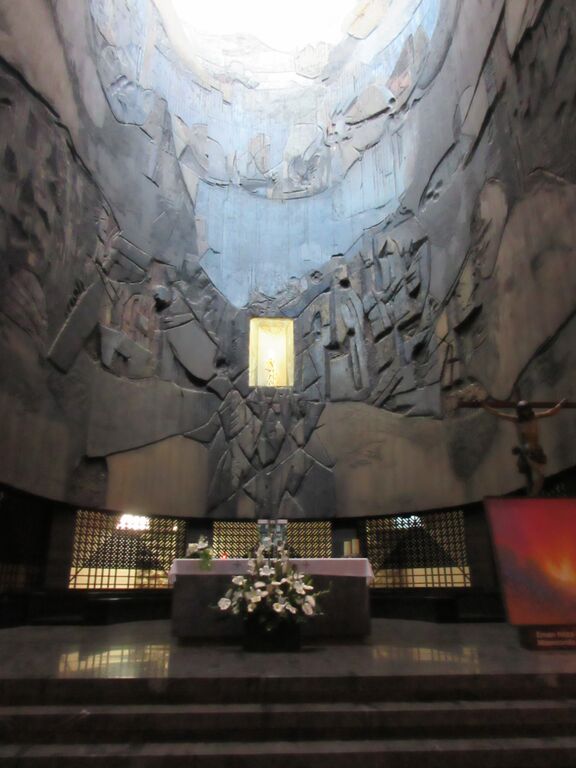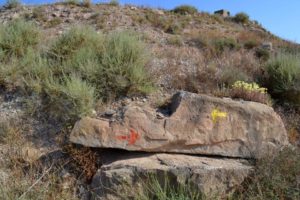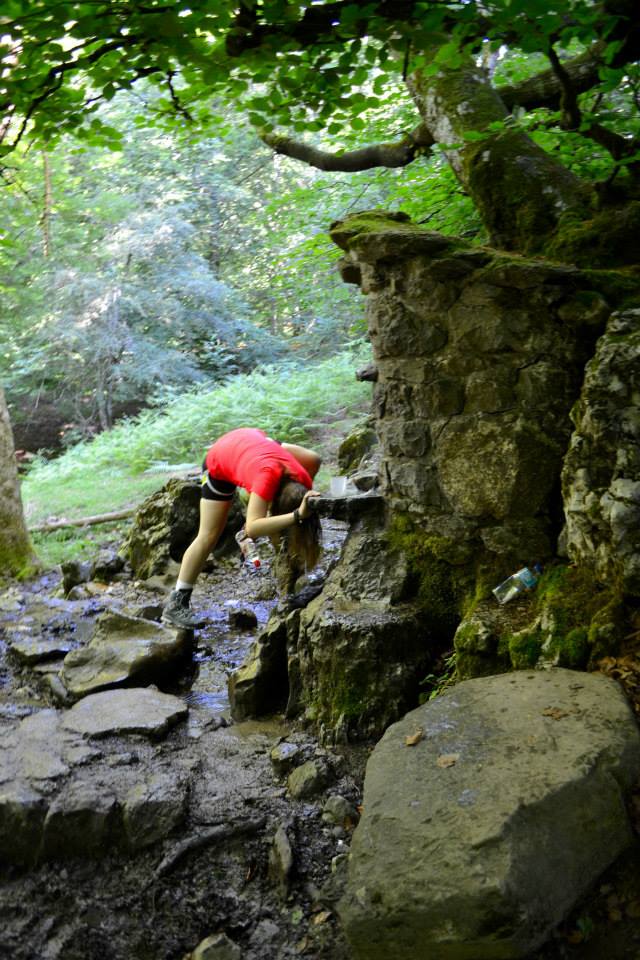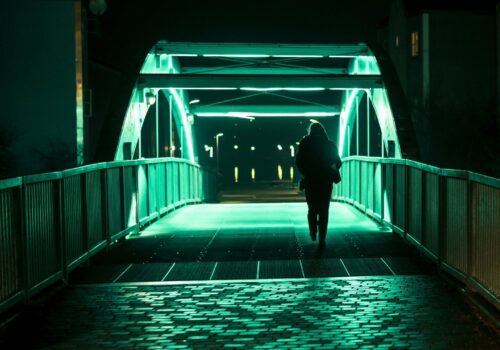ARÁNTZAZU, June 28, 2015

Photo: Sarah Stanley, used with permission
Professor Pham:
Leaving Loyola, our group arrived at Aránzazu on a busy Sunday morning. The whole sanctuary was buzzing with adults and children, men and women, young and old, tourists and pilgrims, hikers and walkers, speaking and talking in different tongues. Walking up to the mountain, everyone seemed eager to reach the top guided by unspoken words and common expectation of something spectacular ahead. Excitement filled the air. One by one our group strolled into the Basilica of the shrine. Immediately upon entering, I was taken over by the magnificent modern architecture of the Basilica. The high ceiling with ample space invited us in for morning prayer.
If the period of convalescence in Loyola was marked by Ignatius’ wrestling against his initial instinct of returning to his former way of life, then the journey to Aránzazu could be characterized as the beginning of his ongoing struggle against external social pressure to get in touch ever so deeply with his own desire and conviction. Riding to Aránzazu, Ignatius would have shared the road with many “pilgrims bearing crosses on their shoulders, praying and singing devoutly and practicing other penances.”[13] To Ignatius, Aránzazu embodied a step in both familiar and unknown directions. Like other members of the Loyola family who had come and prayed in front of the sanctuary of La Virgen María de Aránzazu, Ignatius knelt down, his eyes fixed on the smiling Virgen with Baby Jesus on her lap.[14]
Rather than praying for some miraculous cure, Ignatius sought the grace to confirm his decision to leave his former way of life and to embark on the journey to Jerusalem to imitate Christ. What he had received in Loyola was meant only as an initial step in a long journey.

Photo: Kathryn Barush
Ignatius could have easily remained in the serene Aránzazu spending the rest of his life in devotion and penance or joined the flow of pilgrims walking toward the famous Santiago de Compostela. Instead he continued moving in the opposite direction, heading south toward Montserrat, his eyes on the horizon of the Holy Land. As in his early experience of discernment in Loyola, Ignatius recognized movement and direction were essential dimensions of his spirituality.
Upon entering the church, our group was scattered in all different directions mesmerized with the multiple layers of beauty found in various statues, stained glass windows, and paintings. The quiet tranquility and dimly lit candles drew me to the front of the sanctuary. The Virgen sat on the thorn bush presiding over the sacred space, one hand holding the globe, the other her baby. A rather big and rusty cowbell at her feet captured my curiosity. Continuous clicks of the cameras and muttering from dispersed groups of students who seemed in constant search for a perfect angle, a perfect photo, disturbed the quiet solemnity. I was annoyed. Wouldn’t it make better sense to settle into the space and to breathe in its air first before moving around and taking photos? Instead of praying, my mind was lost in thoughts of how distracting modern technology could be. A wave of questions flooded my mind: What were we doing here? Were we pilgrims or tourists? I decided to hide myself behind the lectern still stewing in my inner dialogue. Some minutes passed. Then I looked back to see where the group was. I was utterly moved by the magnificent glimpse of everyone praying. Detached from technology, they were either kneeling or sitting in the pews in their own silence. The serene beauty of the sanctuary had slowly unarmed the different preoccupations of our various inordinate attachments, physically or mentally, and drew us ever closer to its solemn sanctum. It was not we who found the road, but the road and its subtle yet prevailing beauty that found us.

Photo: Sarah Stanley, used with permission





